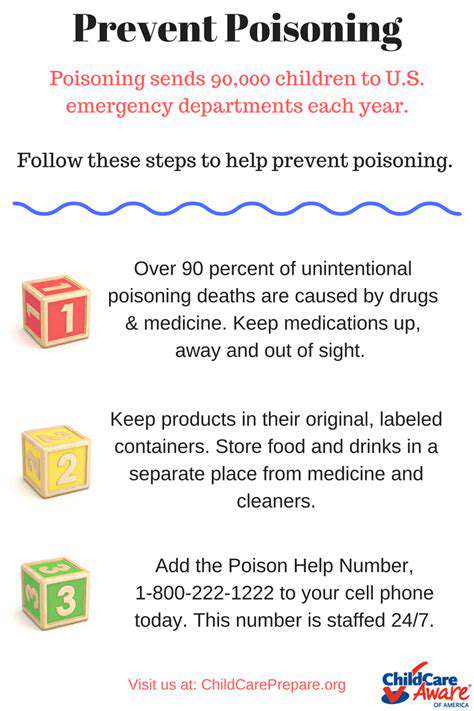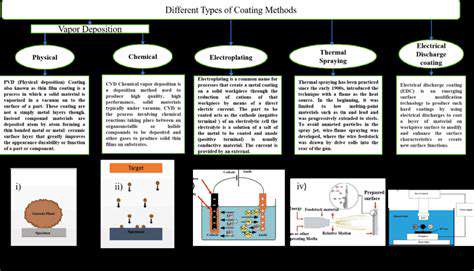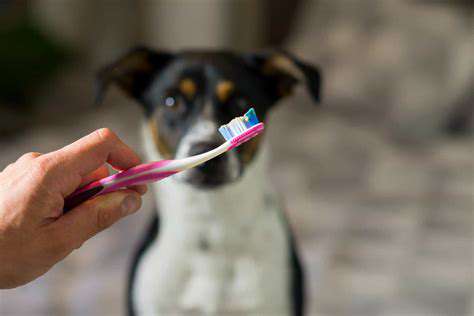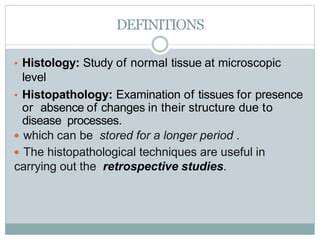Pet First Aid for Fractures: Immediate Care
Immobilization: The First Priority
When dealing with a suspected fracture in a pet, immediate immobilization is crucial. This prevents further damage and pain to the injured limb. Never attempt to manipulate or straighten the limb yourself, as this could worsen the fracture and cause additional injury. Instead, gently and carefully support the injured limb in its current position using a supportive material, such as a rolled-up towel or blanket.
The goal is to stabilize the joint above and below the fracture site. A makeshift splint can be created using cardboard, stiff material, or even a sturdy box. Be sure to pad the splint to prevent rubbing against the pet's skin and causing discomfort. This initial immobilization will help maintain the limb's position until veterinary care can be provided.
Controlling Bleeding and Swelling
Assess the injured area for any visible bleeding. If there is bleeding, apply gentle but firm pressure with a clean cloth or bandage to the wound. Elevate the injured limb slightly, if possible, to help reduce bleeding and swelling. Applying ice (wrapped in a cloth to avoid direct contact with the skin) to the injured area can also help control swelling and ease discomfort.
Be mindful of any signs of excessive bleeding or swelling. If the bleeding is severe or if swelling rapidly increases, contact your veterinarian immediately. Rapid swelling can indicate internal bleeding, which requires prompt attention.
Assessing the Pet's Condition
Beyond the injured limb, take a moment to assess the pet's overall condition. This includes checking their breathing rate, heart rate, and level of consciousness. Look for any signs of shock, such as pale gums, weakness, or lethargy. Document any observations and relay them to the veterinarian when you call. This information will help the veterinarian determine the best course of action.
Note the animal's behavior as well. Are they whimpering, crying, or exhibiting any other signs of discomfort? This context will offer clues to the severity of the injury and help prioritize treatment.
Seeking Veterinary Care Immediately
Regardless of your experience with pet first aid, a suspected fracture always necessitates immediate veterinary attention. A veterinarian has the expertise, equipment, and tools to properly diagnose and treat the fracture. Transporting the pet to the veterinary clinic as quickly and safely as possible is paramount. If possible, use a carrier or a safe method of transport to prevent further stress or injury to the animal during transport.
Delaying veterinary care for a fractured limb can lead to complications, including further damage to the limb, infection, and long-term mobility issues. Veterinary intervention is critical to ensure the best possible outcome for your pet.
Controlling Bleeding and Shock
Controlling External Bleeding
Controlling external bleeding is a critical first step in managing any injury, especially in pets. Rapid blood loss can quickly lead to shock and other life-threatening complications. Apply direct pressure to the wound using a clean cloth or bandage. If possible, elevate the injured area above the heart to help slow the flow of blood. Don't remove the initial dressing if it becomes soaked; instead, add more layers on top. Be prepared for significant blood loss and take necessary precautions for your own safety while assisting your pet.
Using sterile gauze or clean cloths, apply firm, sustained pressure to the wound. Avoid using cotton or other materials that might absorb less blood than a sterile dressing. If the bleeding continues despite direct pressure, consider using a pressure point to temporarily slow the flow. These points are located in the body where large blood vessels lie close to the surface. Be cautious and seek veterinary assistance immediately if you are uncertain about the appropriate pressure points or if the bleeding persists.
Assessing the Severity of the Injury
Assessing the severity of the injury is paramount in determining the appropriate course of action. Look for signs of significant blood loss, such as pale gums, weakness, or rapid breathing. Evaluate the extent of the wound and the presence of any other injuries. If there's a possibility of a fracture, pay close attention to any unusual movement or pain in the affected area. Thorough assessment will help you determine the urgency of the situation and guide you toward the best possible approach for your pet.
Look for any signs of broken bones, open wounds, or other visible injuries. Consider the mechanism of injury. If the injury occurred from a fall or a significant impact, the severity could be greater than a minor scrape. Note the location and size of the wound to help determine the extent of the damage. Document the time of the injury, your observations, and any actions taken for future reference, which may be useful for the veterinarian.
Preventing Further Injury
Preventing further injury is essential during the initial stages of care. Immobilize the injured area, if possible, to minimize movement and pain. Handle the pet gently to avoid causing further trauma. If there's a possibility of a fracture, avoid manipulating the affected limb or joint. Your goal is to minimize further damage until professional veterinary care is available.
Recognizing Signs of Shock
Recognizing signs of shock is critical for timely intervention. Shock can occur as a result of significant blood loss or other injuries. Look for signs such as weakness, lethargy, rapid breathing, pale gums, and cold extremities. These symptoms indicate a decrease in blood circulation and can be life-threatening. Prompt veterinary attention is crucial in cases of shock.
Maintaining Body Temperature
Maintaining your pet's body temperature is vital, especially in cases of shock or prolonged bleeding. Wrap the pet in a warm blanket or towel to help regulate their body heat. Keep the environment warm and comfortable to help prevent hypothermia. Avoid placing the pet in direct sunlight or extreme cold environments to minimize further stress on their system.
Seeking Immediate Veterinary Care
Prompt veterinary care is absolutely necessary for any pet with a suspected fracture or injury. Even if the injury appears minor, seek professional medical attention as soon as possible. Veterinarians are equipped to diagnose and treat fractures, and they can provide the appropriate care and medications to ensure your pet's well-being. Do not hesitate to contact your veterinarian or an emergency veterinary clinic immediately.
Administering First Aid Carefully
Administering first aid involves careful consideration and a systematic approach. Follow a step-by-step procedure that is tailored to the specific injury. Be aware of your own limitations and seek additional help if needed. It is important to understand that your actions as a pet owner are crucial in the initial stages of trauma care, and your swift and careful response can significantly influence the outcome for your pet.
Preparing for Transport to the Veterinarian
Pre-Transport Assessment
Before transporting your pet to the veterinarian for a fracture, it's crucial to assess their condition thoroughly. This initial evaluation will help the vet understand the severity of the injury and prioritize treatment. Look for any signs of distress, such as excessive pain, difficulty breathing, or changes in their normal behavior. Assess the location and extent of the fracture, noting any visible deformity or displacement of the bone. Document any other injuries or symptoms, like bleeding, swelling, or wounds, that could affect the transport process or the veterinary care.
Ensure the pet is calm and comfortable as much as possible. If they are in distress, try to keep them calm and minimize further movement that might worsen the injury. Keeping them still and quiet in the transport carrier will help prevent further pain or complications during the journey.
Preparing the Transport Carrier
A safe and comfortable transport carrier is essential for transporting a pet with a suspected fracture. Choose a carrier that is appropriately sized for your pet to prevent them from getting injured or becoming stressed. Ensure the carrier is sturdy enough to protect the animal during the journey and has proper ventilation to maintain their comfort and prevent overheating.
Line the carrier with soft bedding, such as towels or blankets, to cushion the pet and minimize any discomfort during transport. This will also help absorb any potential fluids or secretions.
Securing the Pet
Properly securing your pet inside the carrier is vital to prevent them from moving around during transport, which could worsen the fracture. Use restraints like harnesses or pet carriers with secure closures to keep them safely contained. Avoid using restraints that could cause further injury to the fracture site. If the pet is unusually agitated, consult with your veterinarian about the safest and most appropriate method of securing them.
Packing Essential Supplies
Before embarking on the journey, gather all essential supplies to aid in the transport of your injured pet. This might include a leash or carrier, a blanket or towel, pain medication (if prescribed by a vet), antiseptic wipes or bandages, and a copy of your pet's medical history, including vaccination records and any known allergies. Also, have a list of emergency contact numbers readily available, including the veterinary clinic's number and your own.
Communicating with the Veterinarian
Contact the veterinarian's office in advance to inform them about the nature of the injury and the estimated time of arrival. This will help them prepare for the arrival of your pet and ensure that the necessary staff and equipment are available. Provide details about the fracture, any observed symptoms, and any medications your pet is currently taking. This proactive communication will allow the veterinary team to expedite the assessment and treatment process upon your arrival.
Read more about Pet First Aid for Fractures: Immediate Care
Hot Recommendations
- Best Pet Bowls: Stainless Steel and Ceramic
- Pet Hydration: Why It's Crucial
- Stop Counter Surfing: Training Your Dog to Stay Off
- Pet Hypothyroidism: Symptoms and Management
- Signs of Pet Liver Disease: What to Watch For
- Pet Emergency Kits: What to Pack
- Dangers of Xylitol: Toxic to Dogs
- Dealing with Pet Diarrhea: When to See a Vet
- Preparing Pets for Travel: Tips for a Smooth Trip
- Pet Depression: Recognizing the Signs











